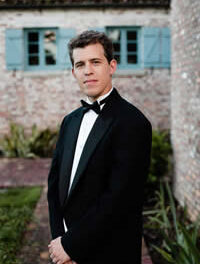So many things went well on January 24 during the first of two fully-staged performances of the initial verismo opera, Pietro Mascagni’s Cavalleria rusticana , in Aycock Auditorium on the UNC-Greensboro campus that the taut one-acter made for an entirely satisfying evening of theater. The 19th-century literary movement toward naturalism was typified by Zola, and verismo, its Italian version, was represented by novelist Giovanni Verga, whose novelette Cavalleria rustican a provided the source used by librettists Giovanni Targioni-Tozzetti and Guido Menasci for Mascagni’s opera. This single opera made him famous and rich but he was never able to replicate his initial success in his later works. His comment was, “It is a pity that I wrote Cavaleria first; I was crowned before I became king.” Its success led to a flood of similar one-act operas, all true verismos characterized by using as subjects lower-class people with strong and violent passions. Of these works, only this opera and its frequent production and recording mate, Leoncavallo’s I Pagliacci, survive in the active repertory.
I was pleased by the highly effective set and scenery, credited to Stivanello Costume. Well lit by Erin Droll, they suggested one of those wonderful crowded Italian hill towns. Mama Lucia’s wine bar was stage left with a table on the square. The center of village social life, the church, was stage right. During the Easter service, the sound of the off-stage organ and choir came from within it. In addition to UNCG students, the chorus included members of the Men of the Old North State. The positioning and movement of the chorus as villagers was believably staged by director David Holley. The singers seemed to be villagers going about their various businesses, not clusters taking a static position.
The pit was well filled by the Philharmonia of Greensboro, a community orchestra made up of a diverse group of amateurs in the 18th-century sense. The strings were the most consistently reliable, with generally good intonation and a wide range of expression so important in bringing off Mascagni’s Prelude and the famous Intermezzo. Among the woodwinds, the oboe had many fine solos and the flutes were consistently good. The rest had their mix of good and bad moments. The brass were least consistent and the horns, often approximate. The tubular bells were a delight and the harp underpinned one of Turridu’s important arias.
There were no weak soloists. I had been impressed with tenor Brian Carter as Pluto in last spring’s fine production of Offenbach’s Orpheus in the Underworld. His well-supported voice brought out the full range of Turridu’s tragic character. His scene with Santuzza before going to mass displayed barely-concealed contempt and rage. Near the end, his scene with his mother, Lucia, showed guilt about his dishonoring of Santuzza and concern for her future as well as his love for his mother. I could have sworn that I heard a Gigli-like gulp near the climax and he certainly had a tear or more in his voice earlier. His diction was clear throughout, with the voice well projected and no strained notes.
Soprano Jessica Van Ord, who sang the role of the wronged Santuzza, displayed a large voice that was well supported with a good high end. Her diction improved as the evening proceeded. She was effective in the wide range of emotions: hurt and shame in the early scene with Mama Lucia, desperation and rage in the dramatic scene with Turridu, and devastation as the result of her revelation to Lola’s cheated husband, Alfio.
Mezzo-soprano Renee Sokol was dramatically effective as Turridu’s mother Lucia. Teamster Alfio was embodied by baritone Warren Coker – devil may care and on top of the world at the beginning and not about to turn the other cheek at the end, when he learned of Turridu’s affair with his wife Lola. Jennifer Mello made her operatic debut as the designing woman, Lola, in this production. The role is usually done by a mezzo-soprano. The program didn’t designate her voice but to me it seemed a good light soprano. It was certainly lighter than Sokol’s, which was by no means heavy. Mello’s important off-stage solo was well done and so was the dramatic confrontation with Santuzza and Turridu before going to Easter mass. A light-hearted highlight of the production was tenor Carter’s singing of the famous Brindisi, a joyful salute to wine. All the musical strands were well controlled by conductor Robert Gutter. David Holley authored the supertitles used in the Mascagni.
I have been impressed with the high quality of the fully staged productions of the UNCG School of Music opera department. I wish I had discovered them earlier, and I look forward to hearing one of the three performances of this spring’s opera, Mozart’s The Magic Flute.












